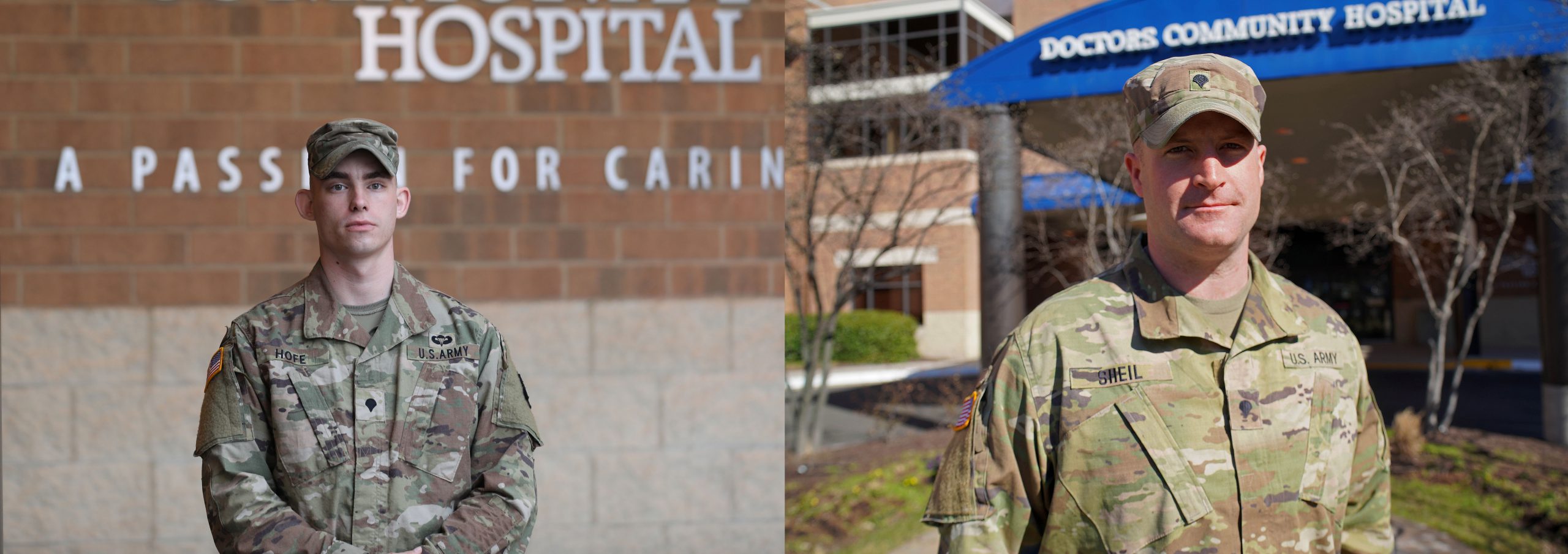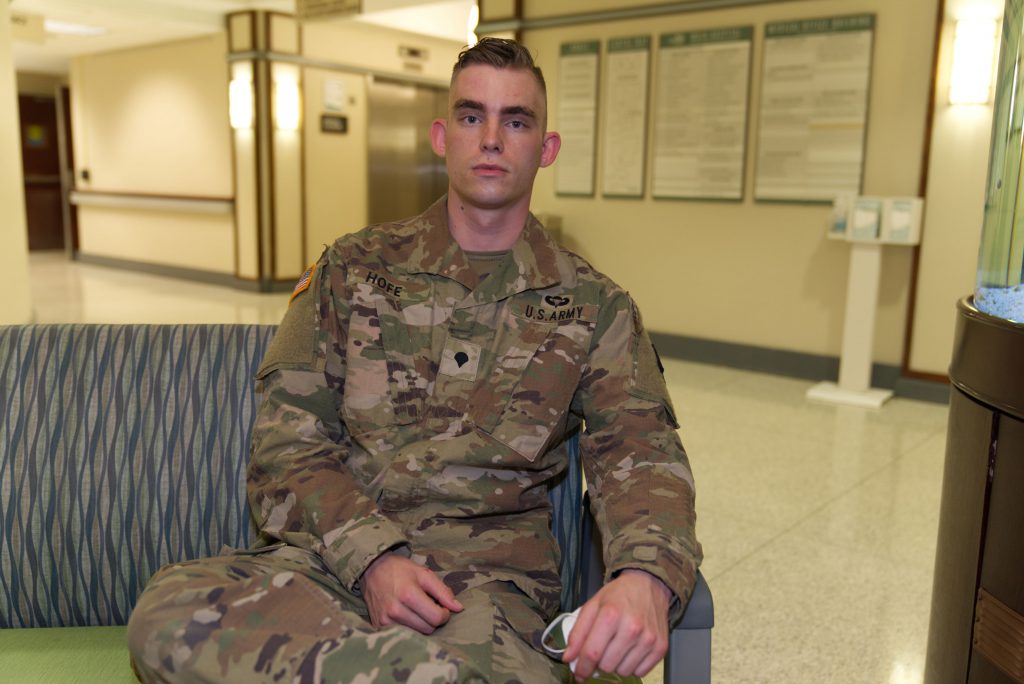Soldiers Help Save a Life at Hospital
Article by Sgt. Allen Griffith, 29th Mobile Public Affairs Detachment

Maryland National Guard service members have been serving their community in many ways during the COVID-19 pandemic, from providing food to administering vaccines. On February 18, 2022, Maryland Army National Guard Soldiers Spc. Patrick Sheil and Spc. Paul Hofe provided yet another valuable service to their community—they helped administer CPR to a patient who went into cardiac arrest while at Luminis Health Doctors Community Medical Center. They helped save his life.
Gov. Larry Hogan declared a state of emergency, taking urgent short-term actions to combat the COVID-19 surge in January 2022. He activated up to 1,000 members of the MDNG to assist state and local health officials with the ongoing pandemic response. Sheil and Hofe were among those called up.
“I think to be successful in that moment where life is on the line, boils down to the training and experience that our non-commissioned officers and commanding officers put into us from their careers,” said Sheil. “So we were given the equipment and the training to be successful, we just had to apply it and step up as our number was finally called.”
Sheil and Hofe are members of the MDARNG’s 1st Battalion, 175th Infantry Regiment, and they were assigned to the hospital assisting the nurses and doctors in the emergency room.
“At approximately 12:40 p.m., I witnessed one adult brought into the ER in respiratory distress,” said Sheil. “The emergency room doctor on duty was in the room trying to assess the patient and determine the course of action. At approximately 12:43, the patient became unresponsive and was determined to have lost his pulse. The doctor immediately declared a cardiac arrest and requested as much manpower support as available.”
Sheil and a nurse provided compressions as a team for the first 20 minutes. During that time, Hofe was moving a different patient from the ER to another location on the sixth floor.
“I sent a text message to Hofe and communicated the seriousness of the situation to come down to the room and provide assistance,” said Sheil. “He skipped the elevator, ran straight to the stairwell, and triple-timed down here.”
Hofe quickly joined Sheil with the compressions, allowing the nurse to rotate to other life-saving interventions for the patient. For the next 40 minutes, the two provided compressions as a team.
“We did achieve a return of spontaneous circulation,” said Sheil. “So the patient’s heart began to beat on its own after several rounds of epinephrine injections, [sodium] bicarbonate injections, and other life-saving interventions that were applied.”
CPR efforts ceased once the doctor determined the patient had a sustainable pulse. Both soldiers credit their training for preparing them for this life-saving situation. Training such as the Combat Lifesaver Course, Tactical Combat Casualty Care course and a CPR course.
The value of training the soldiers received and their willingness to assist did not end at the hospital ER. The day after providing life saving CPR support at Doctors Community Medical Center, Hofe found himself in a first responder role again.
“On I-95, on the other side of the highway, there was a vehicle flipped over and the vehicle who had hit that vehicle,” said Hofe. “By the time I got there the cops were there. I assisted in pulling the gentleman out of the vehicle, got him stabilized and put into the ambulance.”
Maryland National Guard service members use both their military and civilian training when serving their community. According to Hofe, the dual training track has proven to be successful for Citizen Soldiers and beneficial to the community they serve.
“It’s a great feeling to be filled with purpose,” said Hofe. “I joined the National Guard to help. You never know when the training that you’re taught is going to be needed. But when you’re in a position to be in charge, or to do something, then you need to fill that role and you need to step up and do that.”

